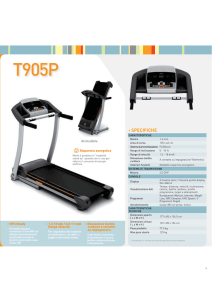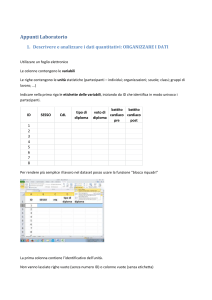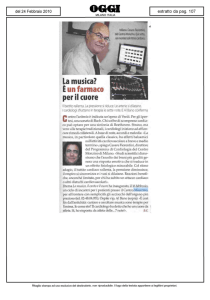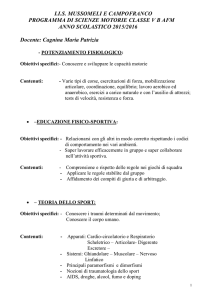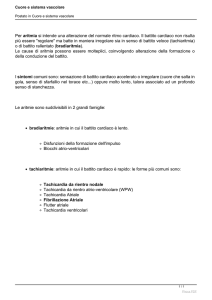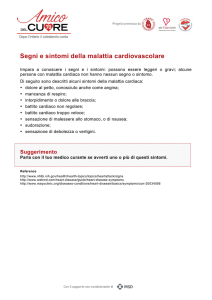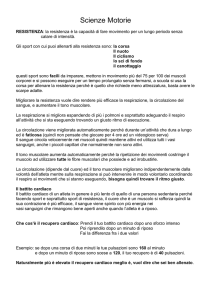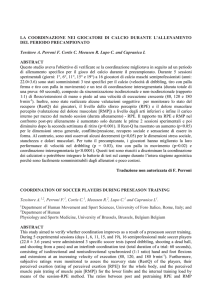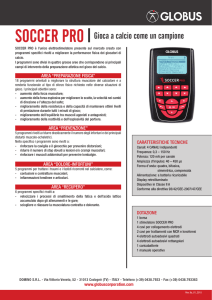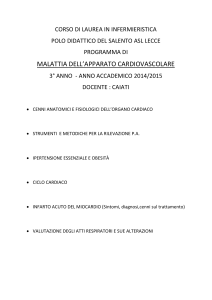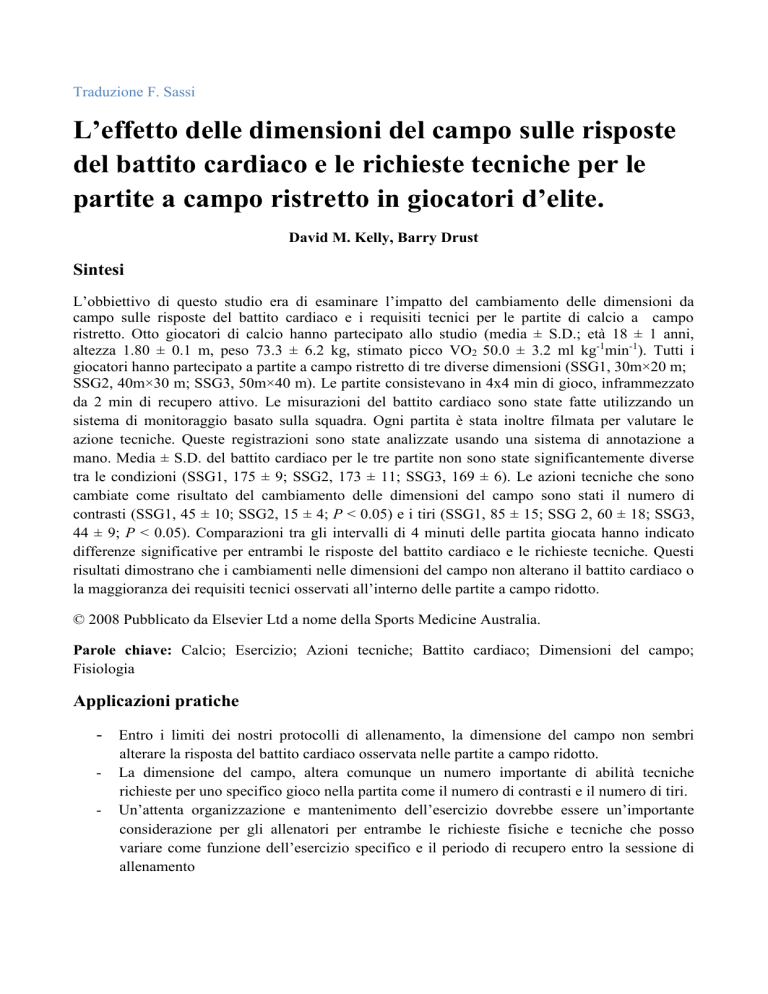
Traduzione F. Sassi
L’effetto delle dimensioni del campo sulle risposte
del battito cardiaco e le richieste tecniche per le
partite a campo ristretto in giocatori d’elite.
David M. Kelly, Barry Drust
Sintesi
L’obbiettivo di questo studio era di esaminare l’impatto del cambiamento delle dimensioni da
campo sulle risposte del battito cardiaco e i requisiti tecnici per le partite di calcio a campo
ristretto. Otto giocatori di calcio hanno partecipato allo studio (media ± S.D.; età 18 ± 1 anni,
altezza 1.80 ± 0.1 m, peso 73.3 ± 6.2 kg, stimato picco VO2 50.0 ± 3.2 ml kg-1min-1). Tutti i
giocatori hanno partecipato a partite a campo ristretto di tre diverse dimensioni (SSG1, 30m×20 m;
SSG2, 40m×30 m; SSG3, 50m×40 m). Le partite consistevano in 4x4 min di gioco, inframmezzato
da 2 min di recupero attivo. Le misurazioni del battito cardiaco sono state fatte utilizzando un
sistema di monitoraggio basato sulla squadra. Ogni partita è stata inoltre filmata per valutare le
azione tecniche. Queste registrazioni sono state analizzate usando una sistema di annotazione a
mano. Media ± S.D. del battito cardiaco per le tre partite non sono state significantemente diverse
tra le condizioni (SSG1, 175 ± 9; SSG2, 173 ± 11; SSG3, 169 ± 6). Le azioni tecniche che sono
cambiate come risultato del cambiamento delle dimensioni del campo sono stati il numero di
contrasti (SSG1, 45 ± 10; SSG2, 15 ± 4; P < 0.05) e i tiri (SSG1, 85 ± 15; SSG 2, 60 ± 18; SSG3,
44 ± 9; P < 0.05). Comparazioni tra gli intervalli di 4 minuti delle partita giocata hanno indicato
differenze significative per entrambi le risposte del battito cardiaco e le richieste tecniche. Questi
risultati dimostrano che i cambiamenti nelle dimensioni del campo non alterano il battito cardiaco o
la maggioranza dei requisiti tecnici osservati all’interno delle partite a campo ridotto.
© 2008 Pubblicato da Elsevier Ltd a nome della Sports Medicine Australia.
Parole chiave: Calcio; Esercizio; Azioni tecniche; Battito cardiaco; Dimensioni del campo;
Fisiologia
Applicazioni pratiche
- Entro i limiti dei nostri protocolli di allenamento, la dimensione del campo non sembri
-
alterare la risposta del battito cardiaco osservata nelle partite a campo ridotto.
La dimensione del campo, altera comunque un numero importante di abilità tecniche
richieste per uno specifico gioco nella partita come il numero di contrasti e il numero di tiri.
Un’attenta organizzazione e mantenimento dell’esercizio dovrebbe essere un’importante
considerazione per gli allenatori per entrambe le richieste fisiche e tecniche che posso
variare come funzione dell’esercizio specifico e il periodo di recupero entro la sessione di
allenamento
The effect of pitch dimensions on heart rate
responses and technical demands of small-sided
soccer games in elite players
David M. Kelly, Barry Drust
Research Institute for Sport and Exercise Sciences, Liverpool John Moores University, UK
Received 1 June 2007; received in revised form 15 January 2008; accepted 24 January 2008
Abstract
The aim of this study was to examine the impact of changes in pitch size on heart rate responses and
technical requirements of small-sided soccer games. Eight male soccer players participated in the
study (mean ± S.D.; age 18 ± 1 years, height 1.80 ± 0.1 m, weight 73.3 ± 6.2 kg, estimated ˙VO2
peak 50.0±3.2 ml kg−1 min−1). All players participated in small-sided games on three different pitch
sizes (SSG1, 30m×20 m; SSG2, 40m×30 m; SSG3, 50m×40 m). Games consisted of 4×4 min of
game play, interspersed by 2 min of active recovery. Heart rate measurements were made using a
team-based monitoring system. Each game was also filmed to evaluate the technical actions. These
tapes were analyzed using a hand notation system. Mean ± S.D. heart rates for the three games were
not significantly different between conditions (SSG1, 175 ± 9; SSG2, 173 ± 11; SSG3, 169 ± 6).
The technical actions that changed as a result of changes in pitch size were the number of tackles
(SSG1, 45 ± 10; SSG2, 15 ± 4; P < 0.05) and shots (SSG1, 85 ± 15; SSG 2, 60 ± 18; SSG3, 44 ± 9;
P < 0.05). Comparisons between the four 4 min intervals of game play indicated significant
differences for both heart rate responses and the technical demands. These results demonstrate that
changes in pitch size do not alter heart rate or the majority of technical requirements observed
within small-sided games.
© 2008 Published by Elsevier Ltd on behalf of Sports Medicine Australia.
Keywords: Soccer; Exercise; Technical actions; Heart rate; Pitch dimension; Physiology
Practical implications
• Within the limits of our training protocols, pitch size does not seem to alter the heart rate
responses observed within small-sided games.
• Pitch size does, however alter a number of important technical skills required for match-play such
as the number of tackles and the number of shots.
• Careful organization and maintenance of practice should be an important consideration for
coaches as both the physical and technical demands can vary as a function of the specific exercise
and recovery period within a training session.
References
1. Reilly T. An ergonomics model of the soccer training process. J Sports Sci 2005;23(6):561–72.
2. Rampinini E, Impellizzeri FM, Castagna C, et al. Factors influencing physiological responses to
small-sided soccer games. J Sports Sci 2007;25(6):659–66.
3. Hoff J, Wisløff U, Engen LC, et al. Soccer specific aerobic endurance training. Br J Sports Med
2002;36(3):218–21.
4. Helgerud J, Engen LC, Wisloff U, et al. Aerobic endurance training improves soccer
performance. Med Sci Sports Exerc 2001;33(11):1925–31.
5. Impellizzeri FM, Marcora SM, Castagna C, et al. Physiological and performance effects of
generic versus specific training in soccer players. Int J Sports Med 2006;27:483–92.
6. Bangsbo J. Optimal preparation for the world cup in soccer. Clin Sports Med 1998;17:697–709.
7. Little T,WilliamsAG. Suitability of soccer training drills for endurance training. J Strength Cond
Res 2006;20(2):316–9.
8. Little T, Williams AG. Measures of exercise intensity during soccer training drills with
professional soccer players. J Strength Cond Res 2007;21(2):367–71.
9. Owen A, Twist C, Ford P. Small-sided games: the physiological and technical effect of altering
pitch size and player numbers. Insight: F A Coaches Assoc J 2004;7(2):50–3.
10. Booth FW, Thomasson DB. Molecular and cellular adaptation of muscle in response to
exercise: Perspectives of various models. Physiol Rev 1991;71(2):541–85.
11. Durnin JVGA,Wormersley J. Body fat assessed from total body density and its estimation from
skin fold thicknesses. Br J Nutr 1974;32:77–97.
12. Krustrup P, Mohr M, Amstrup T, et al. TheYo-Yo Intermittent Recovery Test: physiological
response, reliability, and validity. Med Sci Sports Exerc 2003;35(4):697–705.
13. Drust B, Atkinson G, Reilly T. Future perspectives in the evaluation of Q1 the physiological
demands of soccer. Sports Med 2007;37(4):405–783.
14. Landis JR, Koch GG. The measurement of observer agreement for categorical data. Biometrics
1977;33(1):159–74.
15. Saltin B, Essen B, Pedersen PK. Intermittent exercise: its physiology and some practical
applications. In: Jokl E, Anand RL, Stoboy H, editors. Advances in exercise physiology. Basel:
Karger; 1976. p.25–51.
16. Mohr M, Krustrup P, Bansgbo J. Fatigue in soccer: a brief review. J Sports Sci
2005;23(6):5939.

